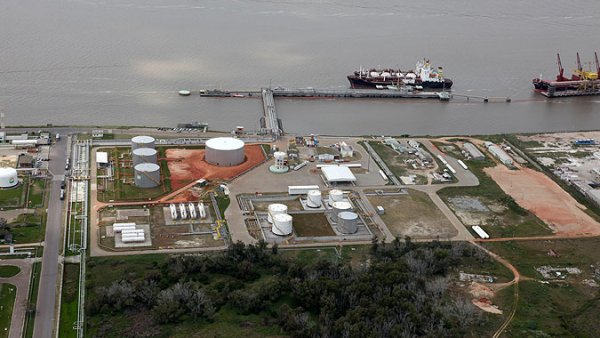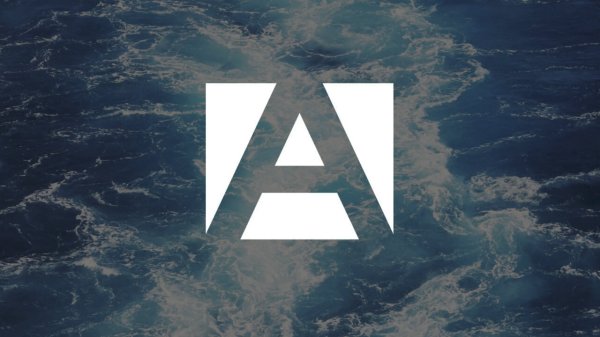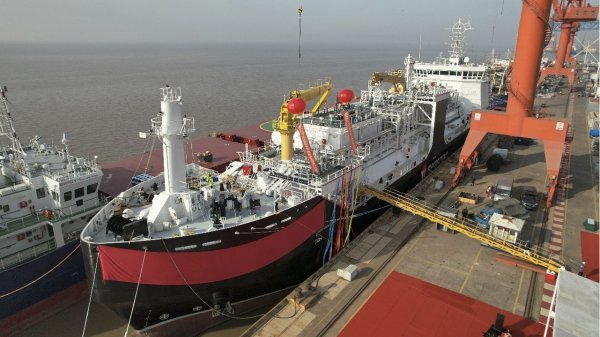Scandlines hybrid ferries rejoin Rostock-Gedser route
Vessels back in action following work that involved rebuilding the injection system.
On 5th February, Scandlines' two new hybrid ferries, the M/V Berlin and M/V Copenhagen, went into ordinary service on the Rostock (Germany) to Gedser (Denmark) route following the completion of technical installations.
The two vessels were initially added to the Rostock to Gedser route in May and late December 2016. Prior to this, the route had been operated by two former Great Belt ferries, which were no longer able to meet the route's capacity requirements.
The new ferries were originally fitted with a combined diesel-mechanic and diesel-electric propulsion system. As part of the completion process at the Danish shipyard Fayard A/S, a battery bank was installed so that the vessels were able to operate as hybrid ferries.
Following the delivery of both vessels, a yard stay was planned in order to complete technical installations that involved rebuilding the common rail injection system of the M/V Berlin's and M/V Copenhagen's engines. The new injection modules were delivered in early January and the M/V Kronprins Frederik was used in place of the two new vessels while they were not in operation. Work has now been completed and on Sunday both ferries went into ordinary service on the Rostock to Gedser route.
The two new ferries are operated by the Scandlines' hybrid propulsion system, combining traditional diesel power with electric battery power. This is designed to enable each vessel to optimise its fuel consumption by adjusting its engine output, and at the same time there is a redundant power supply in case one of the diesel engines stops unintentionally. Along with other optimising initiatives, Scandlines says the fuel consumption of the vessels has been reduced to almost one third per crossing per car compared to the ferries previously operating on the route.
Both new vessels have also been fitted with an exhaust gas cleaning system, also known as a scrubber. The system is said to clean at least 90 percent of the sulphur and particulate matter out of the exhaust gas, thereby emitting water vapour from the funnel of the ferry.
At 18,000 kilowatts (kW), the vessels operate at speeds of up to 22 knots (41 kilometres per hour), and the 48.9 kilometres between Rostock and Gedser are covered in 1 hour and 45 minutes.
With space for 460 cars, or 96 lorries, the capacity on the route has been more than doubled. Furthermore, Scandlines has extended the timetable so that there are up to 21 daily departures.
The two vessels were initially added to the Rostock to Gedser route in May and late December 2016. Prior to this, the route had been operated by two former Great Belt ferries, which were no longer able to meet the route's capacity requirements.
The new ferries were originally fitted with a combined diesel-mechanic and diesel-electric propulsion system. As part of the completion process at the Danish shipyard Fayard A/S, a battery bank was installed so that the vessels were able to operate as hybrid ferries.
Following the delivery of both vessels, a yard stay was planned in order to complete technical installations that involved rebuilding the common rail injection system of the M/V Berlin's and M/V Copenhagen's engines. The new injection modules were delivered in early January and the M/V Kronprins Frederik was used in place of the two new vessels while they were not in operation. Work has now been completed and on Sunday both ferries went into ordinary service on the Rostock to Gedser route.
The two new ferries are operated by the Scandlines' hybrid propulsion system, combining traditional diesel power with electric battery power. This is designed to enable each vessel to optimise its fuel consumption by adjusting its engine output, and at the same time there is a redundant power supply in case one of the diesel engines stops unintentionally. Along with other optimising initiatives, Scandlines says the fuel consumption of the vessels has been reduced to almost one third per crossing per car compared to the ferries previously operating on the route.
Both new vessels have also been fitted with an exhaust gas cleaning system, also known as a scrubber. The system is said to clean at least 90 percent of the sulphur and particulate matter out of the exhaust gas, thereby emitting water vapour from the funnel of the ferry.
At 18,000 kilowatts (kW), the vessels operate at speeds of up to 22 knots (41 kilometres per hour), and the 48.9 kilometres between Rostock and Gedser are covered in 1 hour and 45 minutes.
With space for 460 cars, or 96 lorries, the capacity on the route has been more than doubled. Furthermore, Scandlines has extended the timetable so that there are up to 21 daily departures.

|
IMO approves pricing mechanism based on GHG intensity thresholds
Charges to be levied on ships that do not meet yearly GHG fuel intensity reduction targets. |
|
|
|
||

|
VARO Energy expands renewable portfolio with Preem acquisition
All-cash transaction expected to complete in the latter half of 2025. |
|
|
|
||

|
NYK trials biofuel in milestone coal carrier test
Vessel is used to test biofuel for domestic utility company. |
|
|
|
||

|
H-Line Shipping orders LNG bunkering vessel
Vessel with 18,000-cbm capacity to run on both LNG and MDO. |
|
|
|
||

|
How to engineer and manage green shipping fuels | Stanley George, VPS
Effective management strategies and insights for evolving fuel use. |
|
|
|
||

|
Swedish government bans scrubber wastewater discharges
Discharges from open-loop scrubbers to be prohibited in Swedish waters from July 2025. |
|
|
|
||

|
MAN Energy Solutions achieves 100% load milestone for ammonia engine
Latest tests validate fuel injection system throughout the entire load curve. |
|
|
|
||

|
Petrobras secures ISCC EU RED certification for B24 biofuel blend at Rio Grande
Blend consisting of 24% FAME is said to have been rigorously tested to meet international standards. |
|
|
|
||

|
Stolt-Nielsen to fully control Avenir LNG with acquisition
Share purchase agreement to buy all shares from Golar LNG and Aequitas. |
|
|
|
||

|
Bureau Veritas supports launch of CIMC SOE's LNG bunkering vessel
Handover of Seaspan Energy's cutting-edge 7,600-cbm vessel completed. |
|
|
|
||

